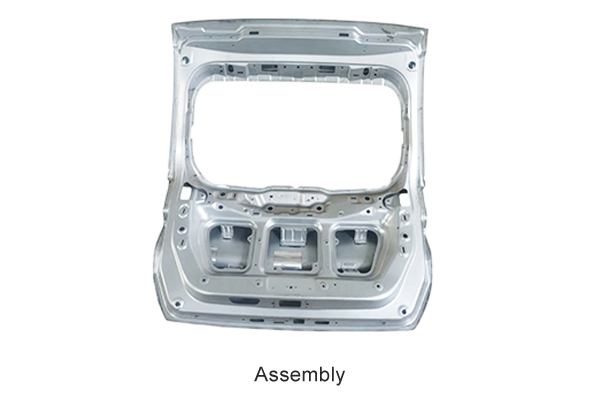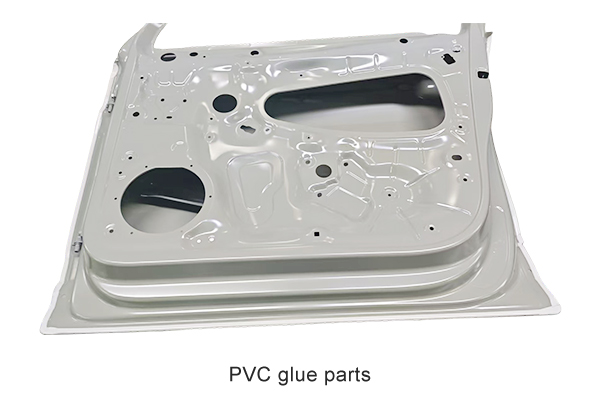How does hydraulic processing of automobile sheet metal technology promote automobile lightweighting?
Release Time : 2025-04-09
At a time when the automobile industry is pursuing high efficiency, energy saving and environmental protection, automobile lightweighting has become a key development direction. With its unique advantages, hydraulic processing of automobile sheet metal technology plays an indispensable role in promoting the lightweighting of automobiles, helping automobiles achieve weight reduction goals in many aspects, from material forming, structural optimization to production efficiency improvement.
Automobile lightweighting is inseparable from the use of new lightweight materials, such as aluminum alloys and magnesium alloys. However, these materials are difficult to form under traditional processing methods and are difficult to meet the shape requirements of complex automobile parts. The hydraulic processing of automobile sheet metal technology uses liquid as a force transmission medium and uses high pressure to make metal sheets bonded and formed in the mold, which can accurately manufacture various parts with complex shapes. Taking the aluminum alloy engine cover outer panel as an example, this technology can be used to form it in one go, avoiding the dimensional deviation problem caused by large material rebound and difficult forming in the traditional stamping process, so that lightweight materials such as aluminum alloys can be more widely used in automobile manufacturing, providing a solid foundation for automobile weight reduction.
In traditional automobile manufacturing, in order to meet different functional requirements, multiple parts often need to be combined together. This method not only increases the weight of the car body, but also makes the assembly process complicated and the cost rises. Hydraulic processing of automobile sheet metal technology can integrate multiple parts into an integral component. For example, in the manufacturing of the front-end structure of the car, 31 parts were originally required to be combined by welding and other methods. After using this technology, only 18 hydraulic forming parts are needed to achieve the same function, and the weight is reduced by 31%. The integration of components not only reduces the number of parts and the weight of the car body, but also improves the overall stiffness and strength of the car body and enhances the safety performance of the car.
In the process of lightweighting of automobiles, reducing material costs is one of the important considerations. Hydraulic processing of automobile sheet metal technology has a high material utilization rate. Because this technology adopts an integral forming method, it reduces the waste of materials during the processing process. Compared with the traditional stamping process, the deformation of the material in the hydraulic forming process is more uniform, which can make full use of the performance of the material and reduce the generation of scraps. In addition, the reduction in the number of parts also reduces the subsequent assembly cost and mold cost, further improves the economy of automobile manufacturing, and provides strong support for the promotion and application of lightweight automobiles.
Automobiles need to withstand various loads and impacts during driving, and the energy absorption capacity of the body structure is crucial. Hydraulic processing of automobile sheet metal technology can produce parts with special shapes and structures, such as tubular hydraulic forming parts. These parts can absorb more energy through their own deformation during collision, effectively protecting the safety of passengers in the car. At the same time, reasonable structural optimization can also reduce the weight of the car body while ensuring strength, achieving a perfect balance between lightweight and safety.
With the continuous development of automobile lightweight technology, new lightweight materials are constantly emerging. Hydraulic processing of automobile sheet metal technology has strong material adaptability. In addition to common aluminum alloys and magnesium alloys, it can also be used for the processing of high-strength steel, composite materials and other materials. This wide range of material adaptability provides more choices for automakers, promotes the application of material innovation in the automotive field, and accelerates the process of automobile lightweighting.
In today's increasingly competitive automobile market, improving production efficiency is the key to reducing costs and enhancing competitiveness for enterprises. Hydraulic processing of automobile sheet metal technology has high production efficiency. Its forming process is relatively simple, reducing multiple processes in traditional stamping processes, such as multiple stamping and trimming. At the same time, hydraulic forming equipment with a high degree of automation can achieve continuous production, greatly shorten the production cycle, improve production efficiency, and enable lightweight automotive parts to be put on the market faster.
Hydraulic processing of automobile sheet metal technology provides strong technical support for automobile lightweighting through its advantages in precision molding, component integration, improved material utilization, optimized structure, adaptability to a variety of materials, and improved production efficiency. With the continuous development and improvement of this technology, it is believed that it will play a more important role in the field of automobile lightweighting and promote the development of the automobile industry towards a more efficient, energy-saving and environmentally friendly direction.








